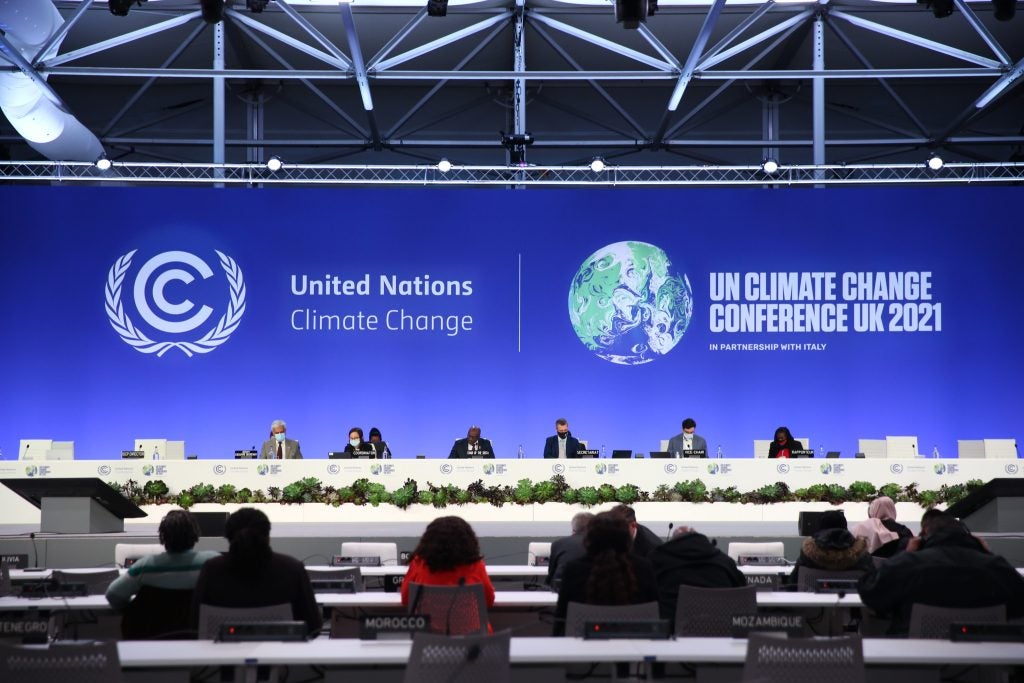UN climate agency’s upcoming review puts a spotlight on Paris Agreement implementation
This post was co-authored by Maggie Ferrato, Senior Analyst for Environmental Defense Fund
In the wake of the COP26 climate talks in Glasgow, it’s clear that current climate targets are not enough to meet the Paris Agreement temperature goals, despite dozens of updated national climate plans and the plethora of announcements made on the sidelines of COP.
With COP26 now in the rearview, it is time to look ahead toward what needs to happen next for the world to get on track to meet the Paris Agreement goals.
The good news is that Paris Agreement was designed to ratchet up ambition over time. One of the elements written in the Paris Agreement, a process known as the global stocktake (GST), just kicked off. The two-year process risks becoming a bureaucratic check-the-box exercise that doesn’t produce any real benefit to the climate. However, if implemented properly, the stocktake offers an important opportunity to increase countries’ climate ambition enough to set the world on the right path to achieving the goals of the Paris Agreement.
Taking stock of global progress
Under the Paris Agreement, countries agreed to undertake a global stocktake every five years to assess their collective progress toward the Agreement’s long-term mitigation, adaptation and finance goals.
Paris Agreement goals:
- Hold global temperature rise to well below 2 C above pre-industrial levels, aiming for 1.5 C.
- Improve the ability of countries to adapt to the adverse impacts of climate change.
- Align finance flows with low-emission and climate-resilient development.
Informed by the outputs of this process, each country is expected to communicate an updated target, or Nationally Determined Contribution (NDC), representing a “progression” beyond its previous NDC and reflecting its “highest possible ambition.”
The combination of the GST and regular NDC updates is known as the “ambition cycle.” Properly executed, the GST process can provide the critical foundation for a regular series of high-level political moments that progressively enhance climate ambition.
The global stocktake process will occur in three phases:
- Information collection and preparation.
- Technical assessment.
- Consideration of output.
The first phase of the GST is now underway, and the process is expected to conclude at COP28 in 2023.
Designing a meaningful process
If implemented properly, the GST can be a bridge to post-COP ambition. That’s why the Center for Climate and Energy Solutions and Environmental Defense Fund are collaborating on an initiative to support and shape the global stocktake process.
We are developing an “opportunities framework” to organize productive consideration of key opportunities for enhanced climate action, as well as strategies to take these forward in the context of the GST.
The GST opportunities framework has two components that will highlight key opportunities to address the climate crisis:
- Landscape analyses: The three landscape analyses—one each for mitigation, adaptation, and finance—survey current and emerging research, data, frameworks, initiatives, technologies, policy options and processes within and outside of the UNFCCC.
- Overarching criteria: An upcoming paper will lay out key criteria that can be used with the landscape analyses to help identify interventions most ripe for transformational change through multilateral and plurilateral efforts.
This opportunities framework will bring key opportunities to the attention of decision makers in countries, sub-national stakeholders and coalitions. It can better equip them to progress toward achieving the long-term goals of the Paris Agreement, including through enhanced NDCs and their effective implementation, as well as wider collective action.
Learn more in our virtual panel discussion with key thought leaders: Designing a Meaningful Global Stocktake. Watch the recording here.










